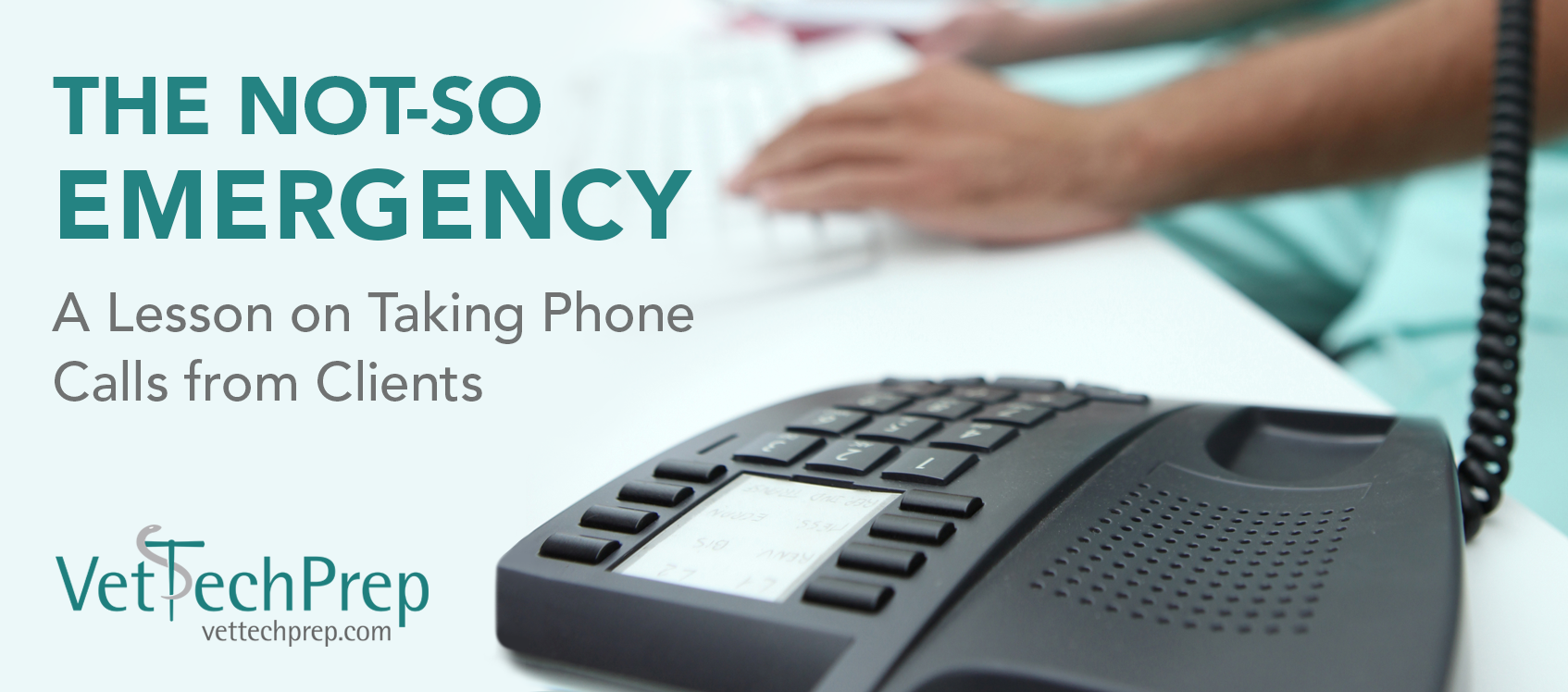
I had just started my internship after finishing veterinary school. I was on my emergency overnight rotation, and I was the only one on duty.
One of the veterinary technicians took a phone call from a frantic client that stated her dog had been impaled by a stick through its chest. The owner was obviously told to bring the dog in immediately.
I was scared to death about this critical impaled dog that was going to walk through the door at any moment. We had the crash cart out, oxygen ready, and were prepared for this dying dog with a chest trauma.
About 20 minutes later, the lady rushes into the hospital with her dog. He looked a little nervous but was bright eyed and wagging his tail. I saw the stick...and started looking closer...
 The stick was sticking straight out from some bubble gum that was stuck to the dog's fur! Luckily, I removed the bubble gum and the dog was no longer "impaled." In fact, I am pretty sure I cured this one for free.
The stick was sticking straight out from some bubble gum that was stuck to the dog's fur! Luckily, I removed the bubble gum and the dog was no longer "impaled." In fact, I am pretty sure I cured this one for free.
When taking calls from clients, tailor questions to the situation. Extensive questioning is not necessary but ask things like, "Is he having difficulty breathing?" Or ask them to check the gum color.
This was only the first of many lessons that usually when the owner calls and schedules an appointment for something, MANY times the diagnosis is completely different than what they came in for.
Have any funny patient stories? We would love to hear them! Leave them in the comment section below.
The Top 15 Tips and Tricks for Studying for the VTNE
 You're of course going to need to study a ton to nail the test, but there are a lot of tips and tricks that will help you make the most of your study time and we've packaged those up in a free guide.
You're of course going to need to study a ton to nail the test, but there are a lot of tips and tricks that will help you make the most of your study time and we've packaged those up in a free guide.
Some of the Top 15 Tips include:
- Familiarize Yourself with the Test Format
- Tackle the Weak Subjects Early
- Start Sooner and Ease Into It
- ...and 12 more!





 You're of course going to need to study a ton to nail the test, but there are a lot of tips and tricks that will help you make the most of your study time and we've packaged those up in a
You're of course going to need to study a ton to nail the test, but there are a lot of tips and tricks that will help you make the most of your study time and we've packaged those up in a 